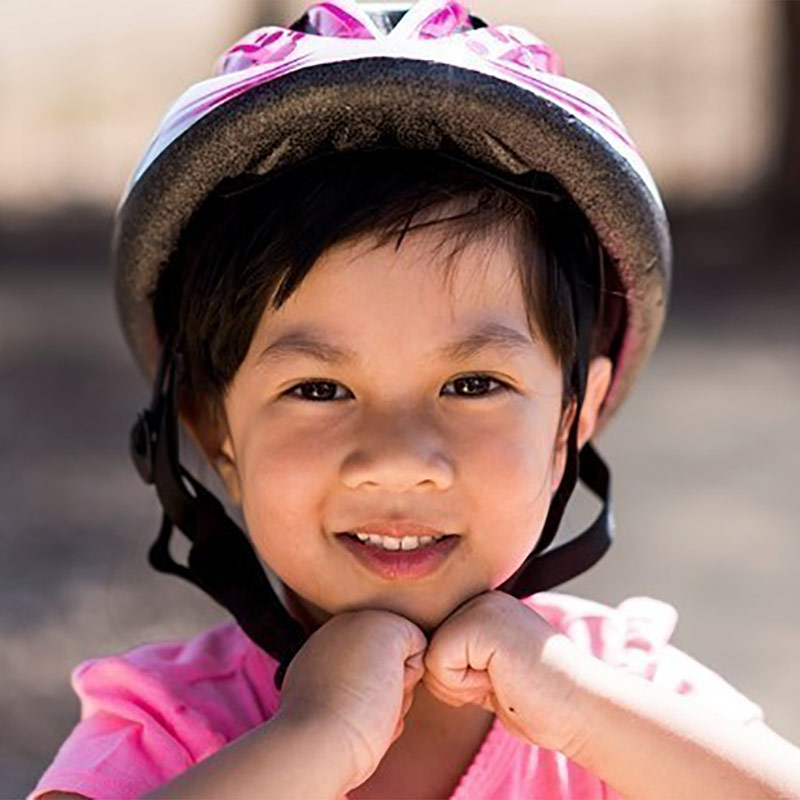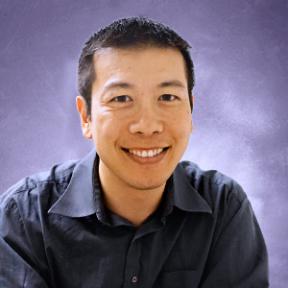Gino Andres and Denette Pagay couldn’t be happier when they welcomed their baby girl, Ke’Ala, into the world in March 2010. As a proud new mom, Denette looked her new baby over from head to toe, she noticed something was wrong.

“Anytime you bring a child into this world you look into their eyes first and then make your way down to see if your baby is healthy,” says Denette. “Once I got down to Ke’Ala’s left foot, I noticed that it was curled inward and it was obvious that something wasn’t right.”
Denette’s suspicions were accurate. Ke’Ala was diagnosed with clubfoot on her left foot during her first check-up at The Children’s Clinic in Long Beach. Clubfoot is a deformity where an infant's foot is turned inward, often so severely that the bottom of the foot faces sideways or even upward. Approximately one in every 1,000 live births will have clubfoot, making it one of the more common congenital (present at birth) foot deformities.
As soon as Ke’Ala was diagnosed, she was referred to Emory Chang, M.D., Pediatric Orthopedic Center, Miller Children’s & Women’s Hospital Long Beach. Once Dr. Chang examined Ke’Ala, he recommended that she begin the Ponseti Method right away.
The Ponseti Method is the leading non-surgical treatment for clubfoot, which uses gentle stretching and casting to gradually correct the foot over time. Dr. Chang is one of only a handful of physicians in Southern California who is certified in this treatment.
The Ponseti Method consists of three elements: casting, Achilles tenotomy and bracing. At the tender age of 4-months-old, Ke’Ala began the treatment and had a long leg clubfoot cast put on.
“Dr. Chang told me the toughest, but most important part, throughout this whole treatment was staying vigilant with the process or her clubfoot could relapse,” says Denette. “With my job I have a lot of fluctuating hours, but Gino was great with helping keep Ke’Ala on track her with healing. Gino brought Ke’Ala back to see Dr. Chang at the Pediatric Orthopedic Center every week for the first five weeks to get a new cast put on.”
And vigilant Ke’Ala’s parents were. Ke’Ala stayed on a strict treatment course, even learning how to crawl wearing casts at 4-months-old. After Ke’Ala got through the casting period, she required a minor procedure — that in most cases is done in an outpatient setting without anesthesia — to cut her Achilles tendon to release continued tightness.
After Dr. Chang performed this procedure, he then put Ke’Ala in one more cast to protect her tendon as it healed to the proper, longer length, which resulted in her clubfoot being fully corrected.
Even after successful correction with casting, clubfoot has a natural tendency to recur. To prevent this from happening, Ke’Ala wore a brace diligently for an additional four years. For the first two months, she wore the brace 24 hours a day, but then transitioned to only wearing it when she slept.
“The Ponseti Method is a very successful, non-surgical treatment for clubfoot, which is why I traveled to Iowa to become certified in it — I truly believe in it,” says Dr. Chang. “However, for the Ponseti Method to be 100 percent effective it takes hard work and vigilance by our patients and their families. In Ke’Ala’s case, that hard work paid off.”
After more than four years Ke’Ala is now completely cured and rides tricycles with ease. Denette doesn’t know where her baby girl would be right now without Dr. Chang, and the team at Miller Children’s Pediatric Orthopedic Center.
“Dr. Chang and his team were so kind and helpful throughout this entire process,” says Denette. “I wouldn’t have known what to do if I was not referred to Dr. Chang. He answered our prayers and changed Ke’Ala’s life.”


